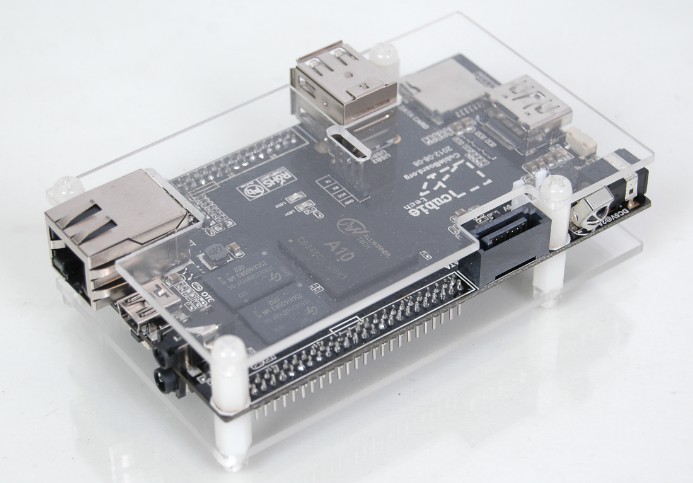HCL:CubieBoard2
The CubieBoard2 is a small Allwinner A20 based device. It has a very competitive price point and is therefore similar to the Raspberry Pi, however a lot more powerfull. It's almost identical to the original Cubieboard except for the SoC.
Technical Data
- 1GHz Dual-Core Cortex-A7, NEON, VFPv3, 256KB L2 cache
- Mali400, OpenGL ES GPU
- 1GB DDR3 @480MHz
- HDMI 1080p Output
- 10/100M Ethernet
- 4Gb Nand Flash
- 2 USB Host, 1 micro SD slot, 1 SATA, 1 ir
- 96 extend pin including I2C, SPI, RGB/LVDS, CSI/TS, FM-IN, ADC, CVBS, VGA, SPDIF-OUT, R-TP..
Writing a disk image to the SD card
- Download the image you want (Leap is stable, Tumbleweed is rolling) from here:
 Tumbleweed
TumbleweedJeOS image If the direct links above do not work for you, please check the general download directory for the images.
 Leap-15.3
Leap-15.3JeOS image If the direct links above do not work for you, please check the general download directory for the images.
- As root extract the image onto your SD card (replace sdX with the device name of your SD card).
WARNING: all previous data on the SD card will be lost. Check first if the device you have selected is really your SD card!xzcat [image].raw.xz | dd bs=4M of=/dev/sdX iflag=fullblock oflag=direct; sync
- Insert the SD card with the openSUSE image into your board.
- Connect the board to your PC via serial port (optional, but helpful for debugging; USB-TTL serial cable needed).
- Connect the board to your monitor (via DVI/HDMI, optional).
- Power on the board.
- Walk through the first boot steps.
- Ethernet is configured to request an IP via DHCP, check your DHCP server for the board IP if used.
- Have a lot of fun...
Default login is root:linux, works on serial console, via ssh, GUI.
